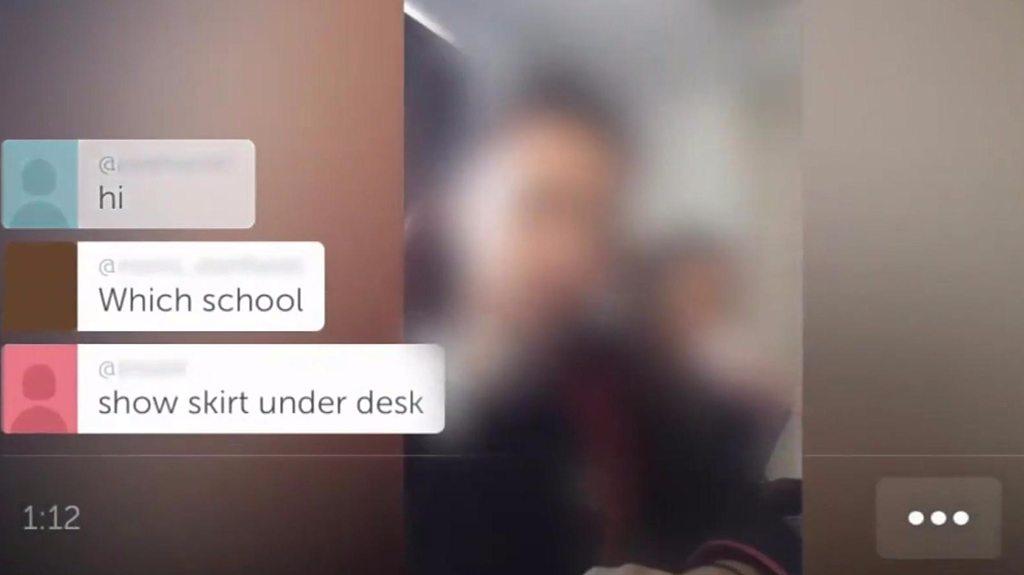Children could get online grooming 'alerts' - NSPCC
- Published
Minister Matt Hancock tells BBC Breakfast both government and social media companies can do more.
Children at risk of online grooming should be sent automatic alerts as part of the government's internet safety strategy, the NSPCC has said.
The children's charity said existing algorithms could be used to flag suspected groomers to moderators.
A "staggering" 1,316 offences were recorded in the first six months of a new child grooming law being introduced last year in England and Wales.
Minister Matt Hancock said he would be robust with social media companies.
The minister for Digital, Culture, Media and Sport said the government was working on making the UK the safest place in the world to go online and that can and "must" include grooming alerts.
He told BBC Breakfast that as a father of three young children it was something that "really mattered" to him.
Before the new offence of sexual communication with a child was introduced in April, police could not intervene until groomers attempted to meet their targets face-to-face.
Of the cases recorded, the youngest victim was a seven-year-old girl, although girls aged between 12 and 15 were the most likely to be targeted by predators.
Facebook, Instagram and Snapchat were the most common sites used by offenders, making up 63% of all incidents.
The NSPCC, which campaigned to bring in the new legislation, has criticised social media companies for not making the most of the technology they already use to enforce the law.
Algorithms - the calculations that tell computers what to do - are currently used by social media companies to flag up images of child abuse, hate speech and extremist material.
The charity said the same techniques should be used to pick up "grooming language" and then send an automatic alert to both the child and moderators.

Analysis
By Chris Baraniuk, BBC Technology Reporter

Facebook, Instagram and Snapchat were the most common sites used by offenders
Automatically identifying malicious or illegal content is something that social networks already do, in some measure.
For example, give a machine learning system thousands of nude pictures and it can, much of the time, go on to pick out new examples of nude pictures in the future.
However, the specifics of these algorithms are closely guarded secrets - companies like Facebook don't like competitors to know too much about content filtering, or that they have established a certain way of doing things that they may later decide to change.
But concerns over how much these sites are doing to tackle problematic material are not new. While Facebook already does some work in identifying grooming behaviour, social networks in general may be reluctant to take on too much responsibility in this area.
Should any new anti-child predator system be shown to have failings or loopholes, they could face even greater criticism.

Tony Stower, head of child safety online at the NSPCC, said that despite the "staggering number of offences", government and social networks are not properly working together to stop this crime from happening.
"Government's Internet Safety Strategy must require social networks to build in technology to keep their young users safe, rather than relying on police to step in once harm has already been done," he said.
The NSPCC said an existing voluntary code of practice does not go far enough and has called for a mandatory code to be put in place.
Meanwhile Facebook said it was already using technology to identify grooming behaviour.
Vera Baird, victim affairs lead at the Association of Police and Crime Commissioners, said she expected the number of cases to be higher given the "endemic" scale of online grooming.
She said alerts are "imperative" to prevention, but should be accompanied by sex and relationships education so that children know how to respond to such a warning.
The Home Office said £20m was spent pursuing grooming offenders in 2017.
- Published31 October 2017

- Published28 September 2017

- Published21 July 2017
